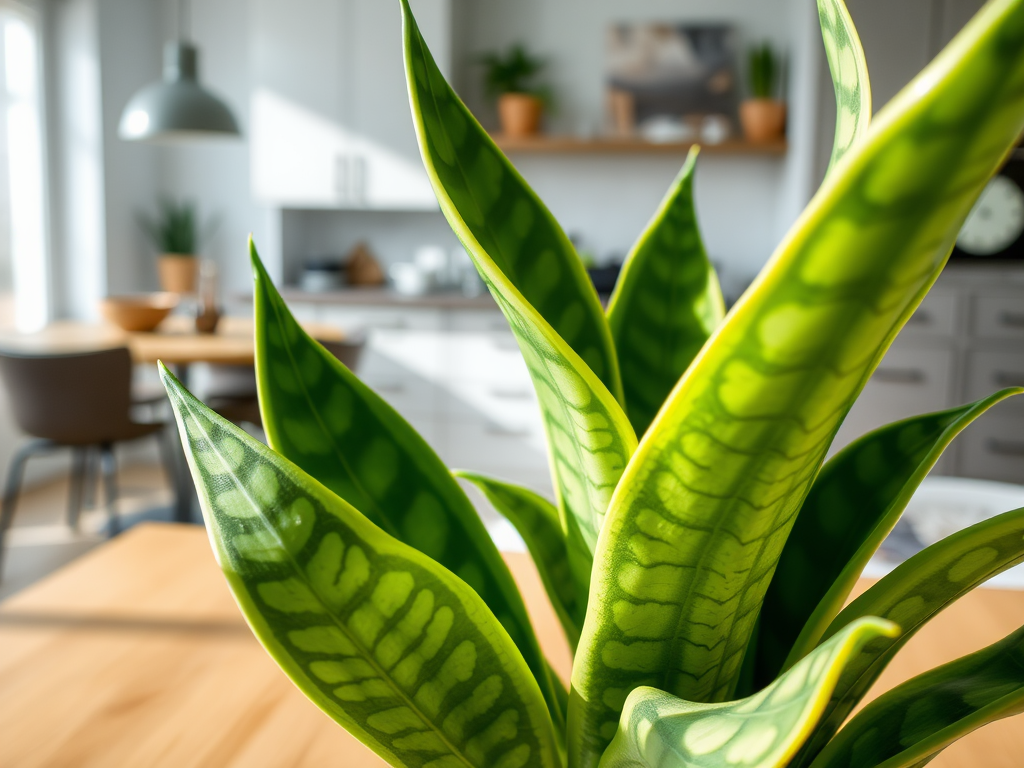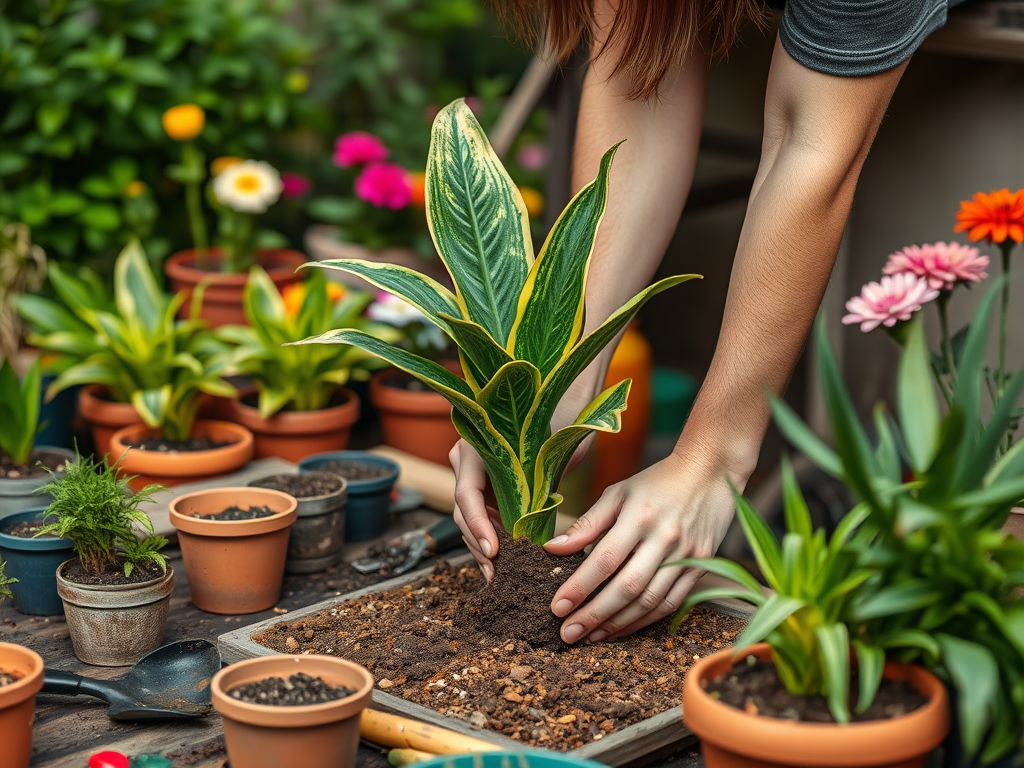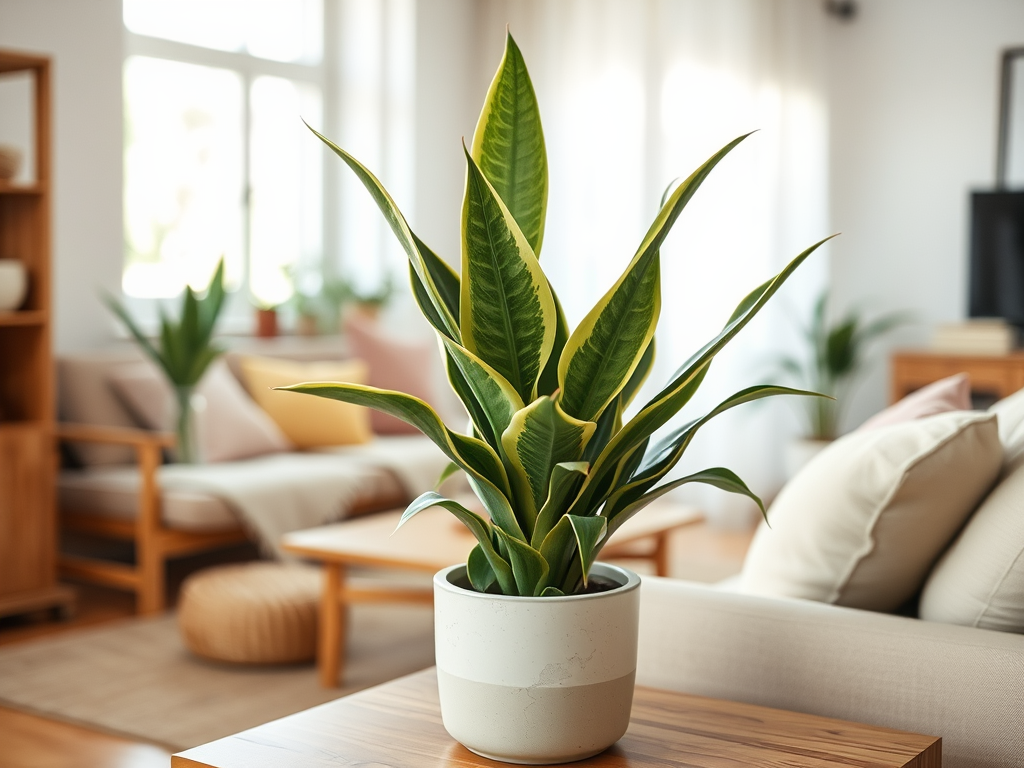Snake plants, scientifically known as Sansevieria, have carved a niche in the world of indoor plants for several reasons. Not only do they offer unique architectural beauty with their tall, sword-like leaves, but they are incredibly easy to care for, making them a favorite among beginners and seasoned gardeners alike. These hardy plants thrive on neglect—a characteristic that sets them apart from more finicky houseplants. Whether you’re aiming to purify your indoor air or simply want a striking green addition to your space, growing a snake plant is a rewarding endeavor.
This guide will walk you through everything you need to know about caring for your snake plant. We’ll explore essential tips and tricks for selecting the right potting materials, watering schedules, and lighting conditions. Plus, we’ll cover potential problems you might face along the way and how to solve them effectively. So if you’re ready to welcome this resilient houseplant into your home, let’s dive in!
Understanding the Snake Plant

Known for its hardiness and air-purifying abilities, the snake plant is a popular choice for both homes and offices. This adaptable plant can survive in various conditions and is known to improve indoor air quality by filtering toxins. With striking leaves that can grow up to several feet tall, the snake plant adds a bold aesthetic to any space. Furthermore, it’s recognized as a “set it and forget it” plant, ideal for busy individuals or those who may not have a green thumb.
Its ability to thrive in low light conditions and withstand drought makes it exceptionally forgiving. Beyond aesthetics, snake plants also contribute to a healthier indoor environment by absorbing carbon dioxide and releasing oxygen at night. This makes them particularly great for bedrooms! Whether you’re an experienced plant enthusiast or just starting your indoor garden, this plant is a must-have for your collection.
Choosing the Right Pot and Soil

The choice of pot and soil plays a pivotal role in the overall health of your snake plant. It’s essential to select a pot that promotes drainage, as snake plants are prone to root rot if left in stagnant water. A terra cotta pot is an excellent choice because it breathes well and helps control moisture levels. Additionally, ensure that the pot you select is slightly larger than the plant’s root system to provide ample space for growth.
Pot Selection
When selecting a pot for your snake plant, consider the following factors:
- Drainage holes: Always choose pots with drainage holes to prevent excess water accumulation.
- Size: A pot that is too small will stunt growth, while one that is too large may hold too much moisture.
- Material: Opt for materials that allow airflow, like clay or terracotta.
Soil Requirements
Snake plants thrive in well-draining soil. This characteristic is vital as it helps prevent waterlogged conditions which can be detrimental to the roots. Look for a potting mix that is specifically designed for succulents or cacti, as these blends typically offer the drainage your snake plant needs. You can also create your own mix by combining regular potting soil with sand or perlite.
| Soil Component | Benefit |
|---|---|
| Regular Potting Soil | Provides needed nutrients for the plant. |
| Sand | Enhances drainage and prevents compacted soil. |
| Perlite | Improves aeration and keeps the soil light. |
Ideal Growing Conditions
To ensure your snake plant flourishes, it’s crucial to provide the ideal growing conditions, including appropriate light and temperature. Generally, snake plants prefer indirect but bright light, though they are also capable of surviving in low-light environments. However, be cautious with direct sunlight; it can scorch the leaves. Ideally, a spot near a window where the plant receives filtered light is perfect for growth.
Light Conditions
When considering light, here are some key points:
- They thrive in indirect sunlight, but can adapt to low-light conditions.
- Avoid direct noon sunlight, which can damage their leaves.
- Rotate your snake plant occasionally to ensure all sides receive light.
Temperature and Humidity
Snake plants can tolerate a range of temperatures, but they prefer warmth. Ideally, the temperature should be between 60°F and 80°F (16°C – 27°C). They are not fond of frost, so if you live in a colder climate, it’s essential to bring them indoors during the winter. Humidity is less of a concern for snake plants, as they can adapt to various levels of humidity, making them incredibly resilient houseplants.
Watering Your Snake Plant
Watering practices are crucial for the health of your snake plant. Unlike many other houseplants, snake plants prefer to dry out completely between watering sessions. This implies that less is more when it comes to their hydration needs. In general, watering them every 2-6 weeks is adequate—more frequently in the growing season (spring and summer) and less so during dormancy (fall and winter). Overwatering is one of the most common mistakes snake plant owners make, resulting in root rot.
Watch out for these signs that indicate your snake plant is receiving too much water:
- Yellowing leaves are often a clear sign of excess moisture.
- Soft, mushy spots on leaves may indicate rot.
- Visible mold or fungus on the soil surface suggests too much water.
Fertilizing Your Snake Plant
Fertilizing your snake plant can contribute to vibrant growth and overall health. Generally, you should fertilize your plant during the growing season, typically from spring to early fall. A balanced, water-soluble fertilizer diluted to half-strength is ideal. Organic options are also available for those who prefer a natural approach. Over-fertilization should be avoided, as it can lead to salt buildup in the soil, harming the roots.
Consider these types of fertilizers for your snake plant:
- Balanced liquid fertilizers: Good for regular feeding.
- Slow-release granules: To provide steady nutrition over time.
- Organic fertilizers: Such as worm castings that nourish the soil naturally.
Common Problems and Solutions
As with any plant, snake plants are susceptible to certain issues that may affect their health. Understanding these problems and their solutions is critical for maintaining your plant’s vitality. One of the most common problems is pests like spider mites, mealybugs, and aphids, which can invade your plant and cause significant damage if not addressed. Regularly inspecting your snake plant and maintaining good hygiene can help prevent infestations.
Here are some common pests and diseases to watch for:
- Mealybugs: White, cotton-like pests often found in leaf joints.
- Spider mites: Tiny, often invisible insects that cause yellowing leaves.
- Root rot: Caused by overwatering; characterized by mushy roots.
Conclusion
Growing a snake plant can be an incredibly rewarding experience for beginners. With its low-maintenance nature and resilience, it offers a fantastic entry point into the world of houseplants. By following the essential care instructions outlined in this guide, you’ll be well on your way to nurturing a thriving snake plant. From choosing the right soil and pot to understanding watering needs and potential problems, you’ll have all the knowledge needed for success. So go ahead, invest in a snake plant, and enjoy the myriad of benefits it brings to your home!
Frequently Asked Questions
- How often should I water my snake plant? Water your snake plant every 2-6 weeks, depending on the season and humidity levels.
- Can snake plants survive in low light? Yes, snake plants thrive in low light conditions, making them suitable for various environments.
- Do snake plants need to be repotted? Snake plants can go years without being repotted, but they should be repotted every 2-3 years for optimal growth.
- What pests are common for snake plants? Common pests include spider mites and mealybugs. Regularly check your plant for signs of infestation.
- Is a snake plant safe for pets? Snake plants are mildly toxic to pets; keep them out of reach if you have curious pets.
